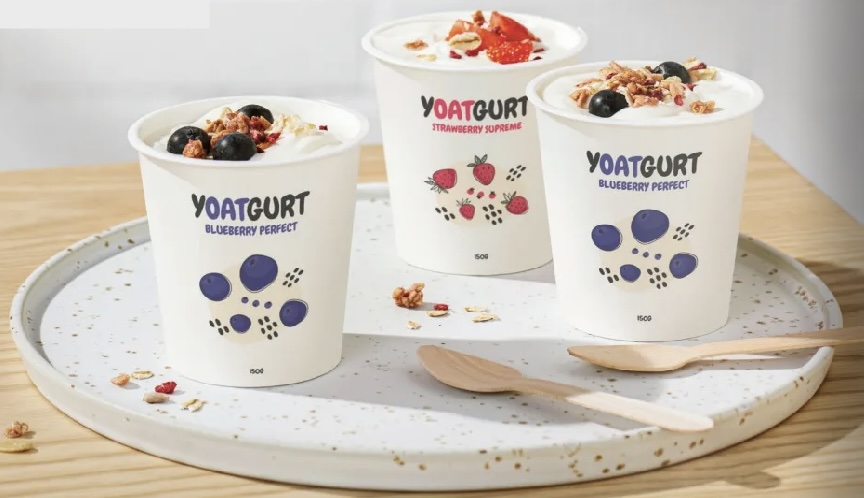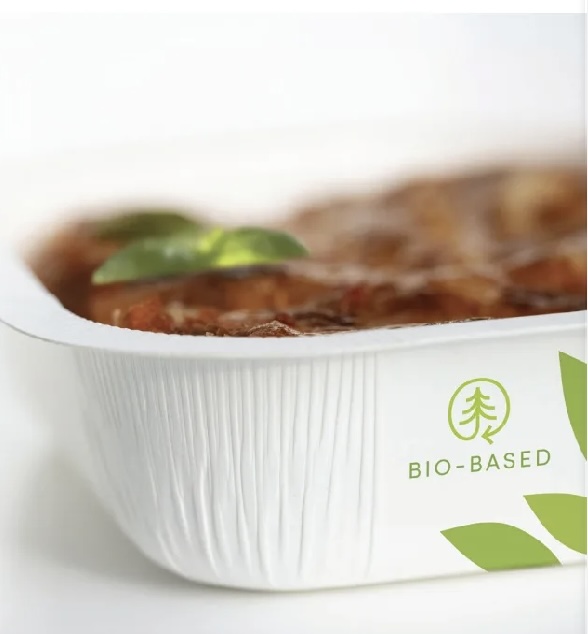Innovation in Extrusion Barriers Can Reduce Brand Owners’ Dependence on Plastic
- Published: April 18, 2024
By Jalliina Järvinen, VP Barrier Development, Stora Enso
According to the most recent statistics from the Environmental Protection Agency1, in 2018 the U.S. produced 35 million tons of plastics, while 27 million tons went to landfill. While recyclability has often been the promise of plastic packaging, the reality is that limited infrastructure, recycling education, lower demand for recycled plastic and inconsistent regulations have resulted in less than 6 percent of plastic packaging waste actually making its way into a recycling program.
Ultimately, our plastic waste challenges are not sustainable long term and will need to be solved with a multi-pronged approach. While better consumer education on plastic recycling continues, policy changes combined with investment in renewable packaging and recycling technologies are set to play key roles in paving the way for a more circular packaging industry in the next decade.
Extrusion coating technology applied to fiber-based materials has made significant strides in recent years, with improved process control, multilayer co-extrusions and new coating materials that have resulted in thinner resin layers. Combined with stronger fiber technology, brand owners now have even more renew-able-based options available for their pharma, food and even liquid products. The result is a sustainable approach to reducing plastic consumption.

Getting Ahead of Global Policy Change
In many parts of the world, regulation is already driving change in the way packaging is manufactured, sorted, recycled and disposed of. In Australia, Southeast Asia and now in the European Union, we are seeing policy with specific targets that aim for comprehensive circularity in the packaging lifecycle by 2030. Forward-thinking brand owners in North America should anticipate significant changes to both consumer demand and regulation withing the next decade.
In 2023, the U.S. EPA shared its Draft National Strategy to Prevent Plastic Pollution?2 and solicited public comment. This strategy outlines goals to eliminate plastic pollution in 2024, including reducing single-use plastics and improving recycling, among others. While the strategy does not contain any legally binding requirements, it does represent the increasing interest toward exploring alternatives in plastic packaging. Executive orders in just the last few years in the U.S. aim to reduce plastic packaging and phase out all single-use plastics on federal lands by 2032.
Another driving catalyst for more efficient packaging solutions is both consumer demand and government regulations around reducing CO2. Aside from the challenges associated with disposing of and recycling plastic packaging, according to the Organisation for Economic Co-operation and Development (OECD), 3.4 percent of global emissions are estimated to come from plastic production. Producing 1 kg of plastic packaging emits an estimated 3-6 kg of CO2, with variations depending on the type of plastic. And plastic packaging is estimated to account for up to 36 percent of that total production.
Extrusion Barrier Advances Next Best Step
 The versatility and affordability of plastic packaging has met an ever-growing demand for products with longer shelf lives, better safety and serving size convenience.
The versatility and affordability of plastic packaging has met an ever-growing demand for products with longer shelf lives, better safety and serving size convenience.
However, those functional benefits and affordability are overshadowed by the negative sustainability impacts of plastic packaging, which have a larger carbon footprint and far lower recycling rates than fiber-based materials.
While efforts continue to recover and reuse plastics, innovation and infrastructure investment has been largely ineffective in keeping up with the demand. Extrusion coated fiber board innovation now offers some of the most practical and efficient means to reduce plastic dependence. Perhaps one of the most ambitious programs to reduce plastic dependency has been the Packaging and Packaging Waste Directive (PPWD) in Europe, with a goal of achieving a 50 percent recycling rate for plastic packaging by next year, and new revisions mandating that all packaging be reusable or recyclable by 2030.
Meanwhile, the Plastic Packaging Waste Regulation (PPWR) sets stricter requirements on the recyclability of plastic packaging waste and single use plastics.
Both the PPWR and revised PPWD have brand owners who sell in Europe rethinking how they deliver food, beverage and pharmaceuticals to market both efficiently and safely.
Overall, extrusion coatings are significantly thinner than the plastics they replace. Many brand owners are already on their way toward achieving 5 percent or less plastics in their packaging by utilizing extrusion barriers. New mono web coating structures promise to help increase the recyclability of remaining polymers while some coatings can even offer the possibility of composting the entire package. But while fiber boards in general have a lower carbon footprint than plastic, consumers still expect the same product quality and perceived safety they have grown accustomed to with plastic containers.
Fiber boards with extrusion technology are now able to offer the best of both worlds in many cases. Fresh meat, fish and cheese trays are currently an area of growth, where barriers are ideal for displaying products while protecting them from oxidation. The shelf life of many frozen or refrigerated foods can be protected from moisture with the thinnest of extrusion barriers.
While extrusion barriers are currently a very small percentage of the total global packaging market, their usage is expected to increase significantly in the coming decade. Consumer demand for more sustainable solutions compounded with impending regulation may be the initial impetus motivating brand owners to explore alternatives to plastic packaging. But as extrusion technology improves in the coming decade, its true value may be seen in its ability to deliver more efficient packaging solutions for the foods, beverages and healthcare products consumers depend on daily while simultaneously helping brand owners meet their sustainability targets.
Better Product Education, Circular Options
While the fiber boards of yesterday may have been more limited in their applications, today brand owners are able to take advantage of better boards to achieve substantially more. Extrusion barrier technology can unlock the potential for renewable fiber to manage even some of the toughest liquid products like soaps and shampoos.
These innovative packaging solutions not only keep brands ahead of pending regulatory requirements but offer value to consumers who are seeking less plastic waste not only in their homes but throughout their world.
2 chrome-extension: //efaidnbmnnnibpcajpeglelefindmkaj/ https://www.epa.gov/system/files/documents/2023-04/Draft_National_Strategy_to_Prevent_Plastic_Pollution.pdf
About the Author
Jalliina Järvinen is the Vice President of Barrier Development at Stora Enso. She is a passionate advocate for sustainable packaging and is leading Stora Enso's efforts to develop innovative packaging solutions that are both functional and environmentally friendly. A member of the Finnish Packaging Association and the European Paper Packaging Alliance, Järvinen is a recognized expert in sustainable packaging and is committed to driving change in the industry.



